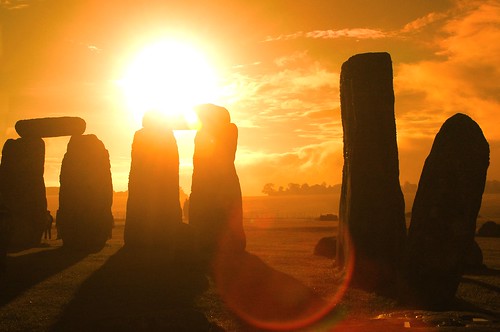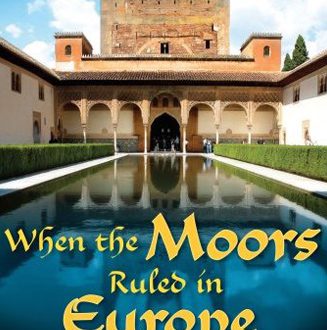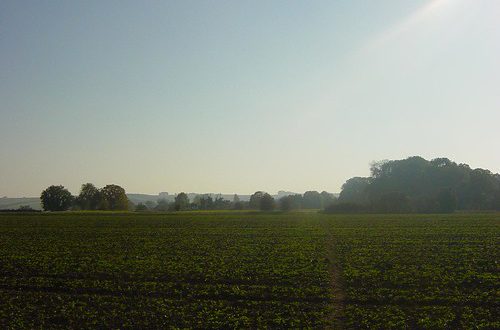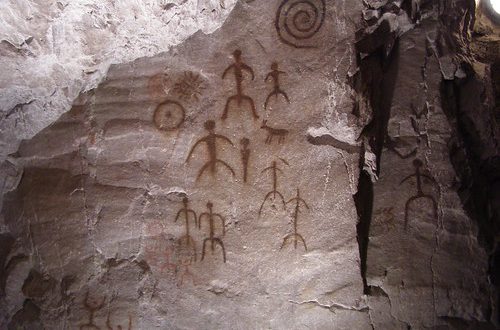 Astronomy rarely leaves today’s headlines, be it the latest shuttle exploring the limits of our galaxy, or feverish paranoia over the Maya Doomsday Prophecy. Man has always been obsessed by the stars, and since our humble beginnings we’ve always gazed up at night, asking the same questions those tens of thousands of years ago have.
Astronomy rarely leaves today’s headlines, be it the latest shuttle exploring the limits of our galaxy, or feverish paranoia over the Maya Doomsday Prophecy. Man has always been obsessed by the stars, and since our humble beginnings we’ve always gazed up at night, asking the same questions those tens of thousands of years ago have.
We caught up with famed astronomer Paul Murdin at a special Ancient World in London event a month back, as he gave a talk about his book Secrets of the Universe. And as Paul describes, astronomical observations have been made for longer than we may think. The Ishango Bone is at first an unremarkable-looking baboon bone from the Congo. Yet the notches along its length may signify one of man’s first forays into astronomy. “It’s thought that the length of the scratches represents the phases of the moon,” says Paul. “As the moon gets bigger, the scratches get larger, until the full moon, and then the scratches get smaller.
“Maybe the owner was a woman who for some reason was keeping track of her menstrual cycle. But this person was making astronomical observations 25,000 years ago.”
Myths and legends have always been wrapped round the stars as a way for man to ascribe his own beliefs. In Roman legend, the Milky Way, our own galaxy, was created when milk from the goddess Juno’s breast spurted into the sky after wet-nursing her husband Jupiter’s son Hercules. There may have been a myriad great discoveries and theories since, but it’s certainly a colourful way of seeing things.
Stonehenge is one of the world’s most mysterious astronomical landmarks. Created up to 5,000 years ago, its stone circle has captivated everyone from ancient Celts to modern Druids. Today most experts see it as a monument to the sun, aligned with the sunrises and sunsets at certain points of the year. That’s why Druids still worship inside the circle at each equinox and solstice – see our AWiL video on Spring Equinox at Stonehenge. You don’t have to leave your home to witness a Stonehenge Summer Solstice – just log on to Stonehenge Virtual to explore the stone circle.
Yet archaeoastronomer (click here for a short guide to archaeoastronomy)Simon Banton says there are plenty of alignments and correspondences to suggest Stonehenge was first used as a lunar calendar:”There is some evidence to suggest that Stonehenge alignments were originally lunar. It’s not quite exactly on the solar alignment. The terminals of (its) ditches seem to be remodelled to try and coax it in that direction.”
Stonehenge will no doubt remain an enigma. But it does hark to an age when man was more in tune with the stars and the seasons than today. Thanks to today’s cities and their accompanying light pollution we barely get a good look at the night sky nowadays, and it’s something Paul feels is a great shame: “I would hope that everybody somewhere got the chance to go to a place that was darkish, and to be told about the stars in the sky,” he says. “The stars are the common heritage of mankind, and we all have a right to enjoy them.”
READMOREABOUTANCIENTASTRONOMY:
- Ancient Astronomy
- Maya Astronomy
- Pythagoras and the Stars
- The Truth about 2012
- The Antikythera Mechanism – a virtual reconstruction
HD Video: Episode 10 – Archaeoastronomy
Click here to view the transcript of this video.
We have many more Ancient World in London videos right here at Heritage Key, from the bloody rebellion of Boudicca to the magic of Hadrian’s Wall – you can even explore Stonehenge for yourself in Stonehenge Virtual. The Ancient World in London is much more than the videos – you can take part in our latest bloggers’ challenge, come along to an event or join the debate on the many issues raised throughout the three months.






